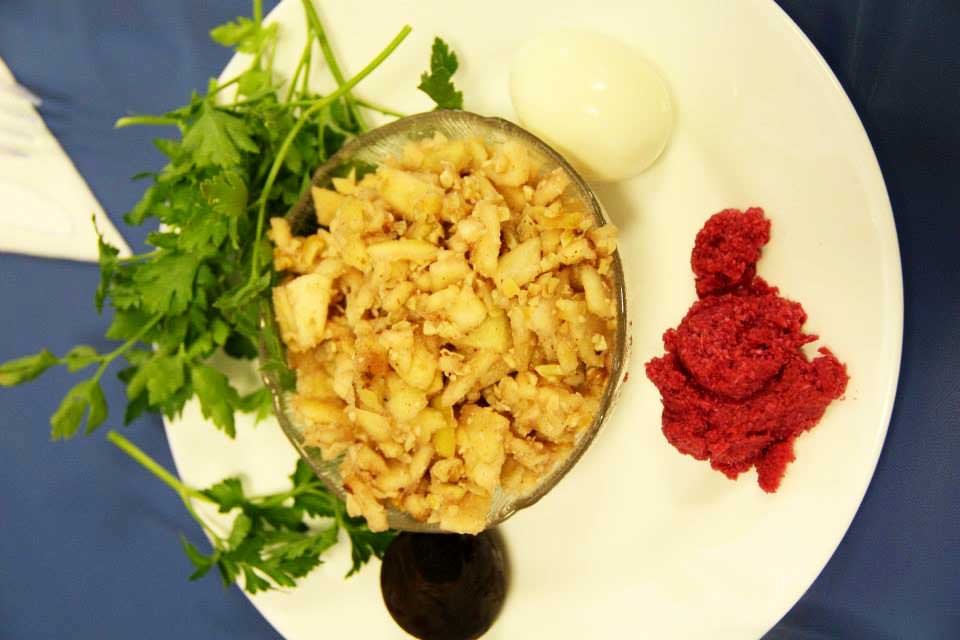CELEBRATING PASSOVER
by Jerilyn Hassell Pool
On Thursday night, our ward held a Seder meal as part of our celebration of Holy Week performed by Ayala Sarah Zonnenschein, the Executive Director at Havurah Shir Hadash, a Jewish community in Ashland, Oregon.
In the interest of full disclosure, I’d read several articles about the wrongness of Christians holding a Seder, and, being very conflicted, I spoke to Ayala beforehand about my reservations. She assured me that she felt our ward had gone to great lengths to be respectful of the ritual and she was honored to be a part of the evening.
I was struck by the beauty of the Seder ritual and Ayala’s words, so I took lots of notes. Ayala spoke to and for us using the all-encompassing terms of “us” and “we” and I will copy that form as well.
The Seder is an opportunity for us to tell our story of slavery and liberation, not as victims, because we do not place responsibility for our enslavement on someone else. During the Seder, we must imagine ourselves at every step of the way, as if we were there.
The Exodus is symbolic of the bondage of the soul, wherein we move from the slave consciousness to the consciousness of a free people. We start in a narrow, tight place—another birth canal—and we must move into a healthy and free life.
We have an inner Pharaoh or a Taskmaster. This represents the elements in our life that keep us in bondage.
We have an inner Moses, that drives us to freedom and a state of wakefulness.
We have an inner Israelite, fearful, insecure and even after experiencing miracles and freedom, we find comfort in the past. We are fearful of what lies ahead.
We must perform our own inner Exodus, moving from our narrow places, rejecting the Pharaoh of Me with his constricted ideas and trusting the Moses of Me who will lead us with light into the free places.
The food of the Seder is also symbolic.
First, we eat bitter herbs dipped in salt water, representing the bitterness and harshness of slavery, soaked in the tears of the slaves and the amniotic fluid of our rebirth.
Next, we break the matzoh, the unleavened bread. The bread is unleavened, not only symbolizing the quickness with which the Israelites had to leave Egypt, but also as a reminder that people who are puffed up (like bread that has risen) are unable to pass through a narrow space.
The broken matzoh is symbolic of our own brokenness. It is symbolic of Isaac, bound on the alter, and Jesus, nailed to the cross. We must take time to reflect on ways we are broken in ourselves, in our families, in our communities, in our country and in our world. We reflect on these and look towards the light of the free space. We must strive to create wholeness in ourselves, our families, our communities, our country and our world.
We spill one drop of wine (or grape juice because of the WoW, natch) for each of the ten plagues: blood (Dam), Frogs (Tzfardea), Lice (Kinim), Beasts (Arov), Pestilence (Dever), Boils (Shchin), Hail (Barad), Locusts (Arbe), Darkness (Choshech), and Slaying of the First-born (Makat Bechoroth).
Ayala told a story about the Israelites at the edge of the Red Sea. Having been liberated from slavery, seeing the miracle that was the Red Sea parting to make way for them, they rejoiced and laughed, until they noticed God was crying. They asked, “Why do you cry? We are free! We are no longer slaves!”
God replied, “I am crying because my Egyptian children have drowned in the sea.”
Ayala closed the Seder by leading us all in a prayer sung in Aramaic and English and said, “I bless you to be a blessing to others and to become a sanctuary for the Holy One of God.”
I am so thankful for a bishop who saw the beauty in the Seder ritual and brought it to our ward. It was a brave choice and enriched our Holy Week observance in ways I didn’t expect. The symbolism of the Seder and the Exodus is a lesson that will stay with me for the rest of my life, as I do the work to move myself from my own narrow spaces and move into places that are healthy and free.
In the words of Ayala, “True liberation comes from taking responsibility for one’s condition.”






An astonishing act of vision and inclusion on the part of your bishop, Jerilyn. I felt the spirit as I read your report. Do thank Ayala for me when the opportunity arises.
I have held Seders at both the Ward level and in my home since I straddle both cultures. And while it is important to be respectful of the Jewish ritual, we must all remember that the Passover is also symbolic of the sacrifice of Jesus Christ, our Passover. It is equally important to recognize that connection that the sacrament was substituted by Jesus for the Passover ritual as our remembrance forever….